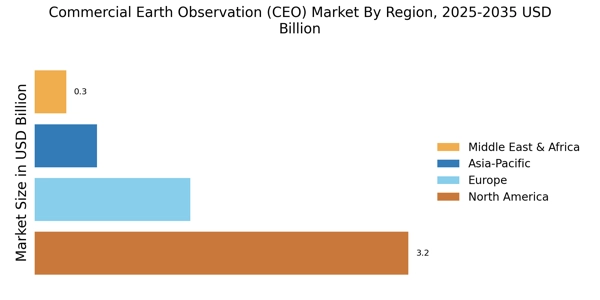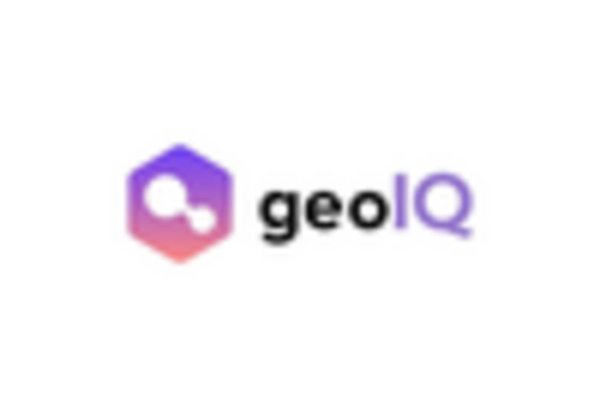Expansion of Smart City Initiatives
The rise of smart city initiatives is driving demand within the Commercial Earth Observation (CEO) Market. Urban planners and local governments are increasingly utilizing satellite imagery and geospatial data to enhance urban infrastructure, improve transportation systems, and manage resources efficiently. The integration of satellite data into smart city frameworks allows for better decision-making and resource allocation. As cities continue to grow and face challenges such as congestion and pollution, the need for innovative solutions becomes paramount. The Commercial Earth Observation (CEO) Market is poised to benefit from this trend, with projections indicating a significant increase in investments in urban monitoring technologies.
Growing Applications in Agriculture
The Commercial Earth Observation (CEO) Market is witnessing a notable increase in applications within the agricultural sector. Farmers and agribusinesses are increasingly utilizing satellite imagery to monitor crop health, optimize irrigation, and manage resources more effectively. The integration of remote sensing technologies allows for precise assessments of soil conditions and crop yields, which can lead to enhanced productivity. Reports indicate that the agricultural segment accounts for a substantial share of the overall market, with projections indicating that it could reach several billion dollars by 2027. This trend underscores the critical role that the Commercial Earth Observation (CEO) Market plays in supporting sustainable agricultural practices and food security.
Rising Demand for Climate Change Monitoring
The urgency of addressing climate change has propelled the Commercial Earth Observation (CEO) Market into a pivotal role in environmental monitoring. Governments and organizations are increasingly leveraging satellite data to track changes in land use, deforestation, and greenhouse gas emissions. This data is essential for formulating effective climate policies and strategies. The market for climate monitoring services is expected to expand significantly, with estimates suggesting a growth rate of approximately 15% annually. As stakeholders seek reliable data to inform their climate action plans, the Commercial Earth Observation (CEO) Market is likely to see heightened investment and innovation in climate-related applications.
Increased Investment in Defense and Security
The Commercial Earth Observation (CEO) Market is experiencing a surge in investment from defense and security sectors. Governments are increasingly recognizing the strategic importance of satellite imagery for national security, border monitoring, and disaster response. Enhanced surveillance capabilities provided by commercial satellites are becoming indispensable for military operations and intelligence gathering. The defense segment is anticipated to account for a growing share of the market, with estimates suggesting that spending on satellite-based services could reach billions of dollars in the next few years. This trend highlights the critical role of the Commercial Earth Observation (CEO) Market in supporting national security objectives.
Technological Advancements in Data Processing
The Commercial Earth Observation (CEO) Market is experiencing a transformative phase due to rapid advancements in data processing technologies. Innovations in artificial intelligence and machine learning are enabling more efficient analysis of vast datasets collected from satellites. This has led to improved accuracy in interpreting geospatial data, which is crucial for various applications such as urban planning, agriculture, and disaster management. The market for satellite data analytics is projected to grow significantly, with estimates suggesting a compound annual growth rate of over 20% in the coming years. As organizations increasingly rely on real-time data for decision-making, the demand for sophisticated data processing capabilities within the Commercial Earth Observation (CEO) Market is likely to surge.


















Leave a Comment